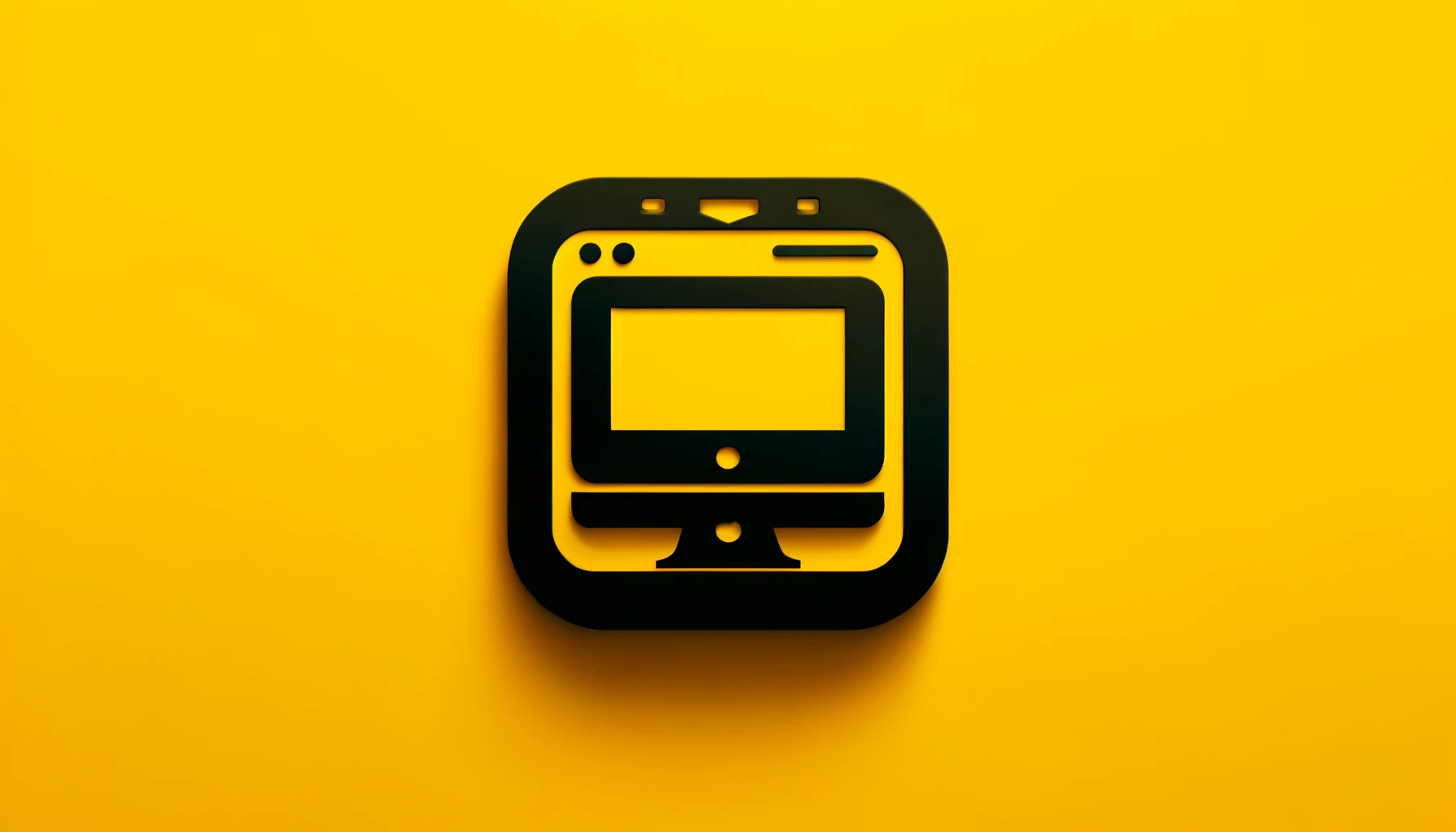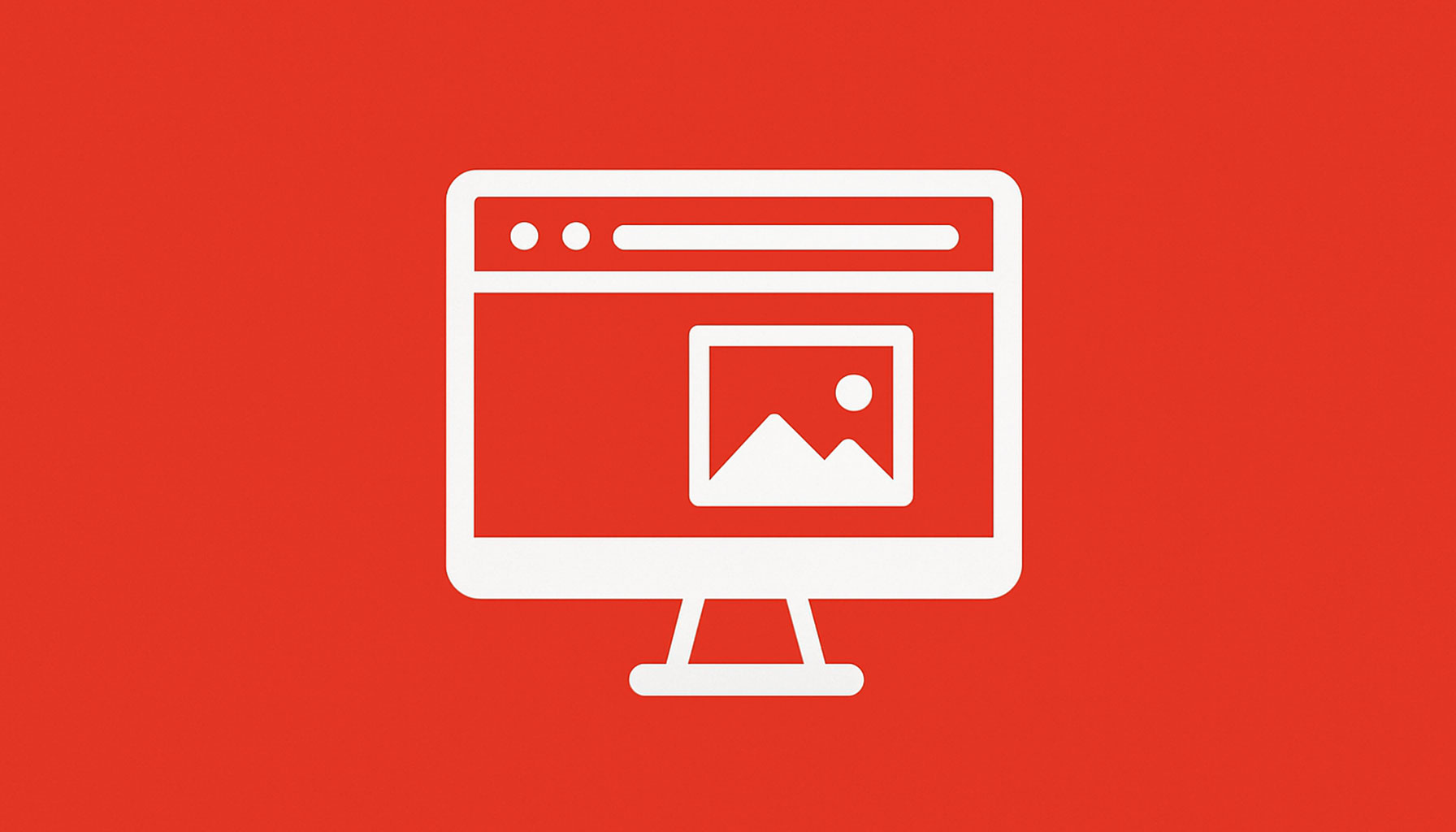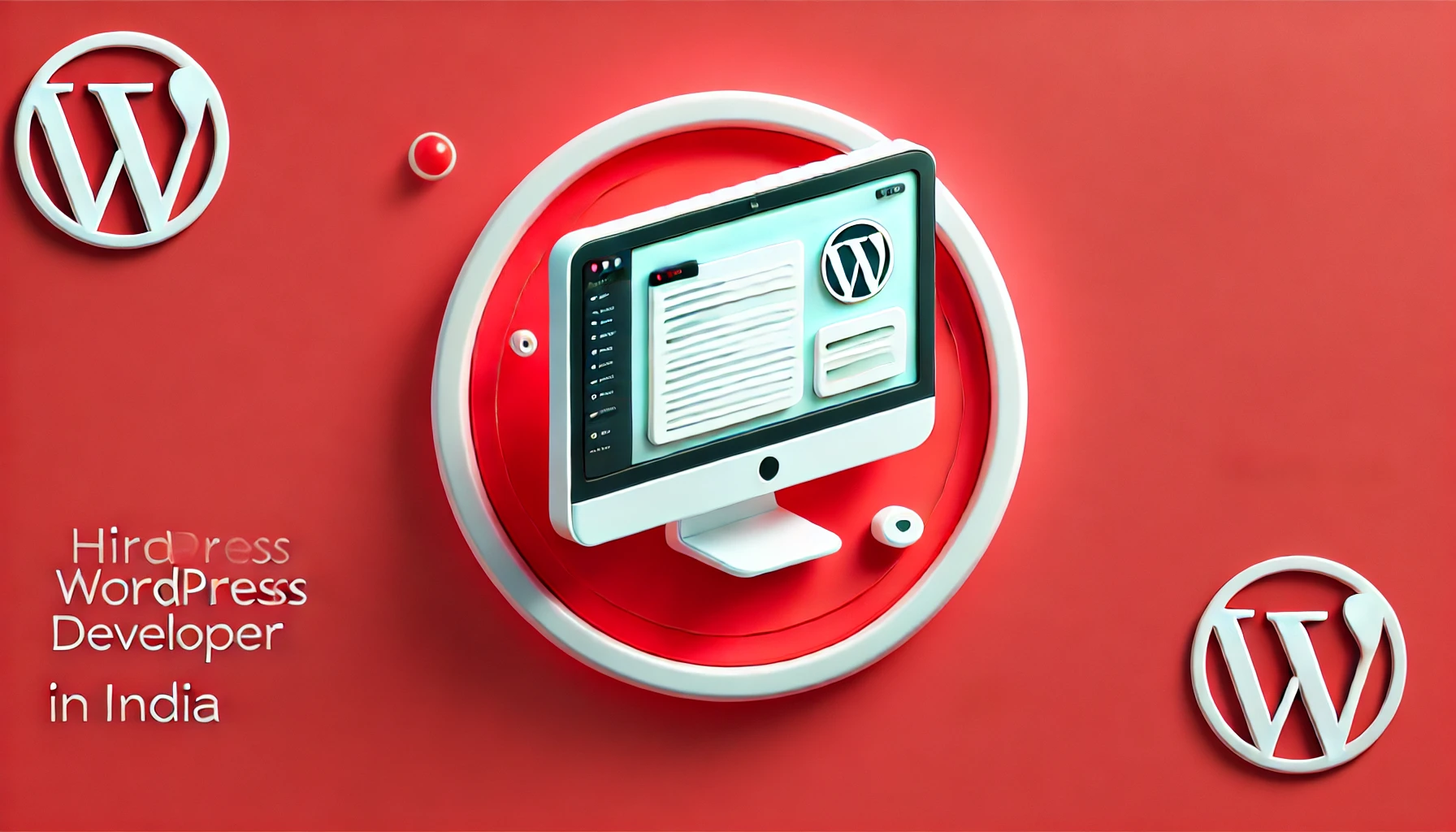Introduction: The Problem with Prioritizing Looks Over Functionality
A visually appealing website is often a business’s first goal when venturing into the digital space. After all, the website is your digital storefront, and just like a brick-and-mortar shop, it must look inviting to attract customers. Design trends like minimalism, bold typography, parallax scrolling, and dynamic animations are tempting tools to create this “wow” factor. However, the question remains: Does an attractive website guarantee success?
The reality is far more complex. While a stunning design might grab attention initially, it cannot hold users, engage them, or guide them to meaningful actions without strong functionality. Research shows that 88% of users won’t return to a website after a poor user experience, even if it looks aesthetically pleasing. This means businesses that prioritize beauty over usability are investing in a short-lived advantage at best.
Consider the case of the luxury fashion brand, Gucci. Their previous website focused heavily on visual storytelling, with oversized imagery and animations that dazzled. However, the site suffered from slow loading speeds and clunky navigation, frustrating users who simply wanted to browse collections. Gucci’s overhaul in recent years has balanced its signature high-end aesthetics with improved functionality, offering a faster, more intuitive shopping experience while retaining the brand’s visual appeal.
Another stark example is Flash-heavy websites in the early 2000s. Brands flocked to this technology to showcase flashy, interactive designs. While visually impressive, these websites often loaded slowly, lacked cross-device compatibility, and were inaccessible to users with disabilities. As a result, they alienated a significant portion of their audience and fell out of favor with the rise of usability-focused web standards.
Today, usability plays a critical role in website success, influencing everything from user retention to SEO rankings. Google, for instance, incorporates page experience metrics like Core Web Vitals into its ranking algorithm, rewarding websites that prioritize fast loading, interactivity, and visual stability. A report from Think with Google found that a 0.1-second improvement in site speed can increase conversion rates by 8.4% for retail sites and 10.1% for travel sites.
This is not to say aesthetics are unimportant. On the contrary, they play a vital role in building trust and establishing brand identity. However, without usability, even the most beautiful website is nothing more than digital decoration. Aesthetic design should complement, not overshadow, the core goal: delivering an effective, seamless user experience.
In this article, we’ll explore why usability trumps aesthetics, how businesses can strike the perfect balance between beauty and functionality, and real-world examples of websites that have succeeded—or failed—because of their design choices. By the end, you’ll understand why a beautiful website isn’t enough and how to create one that truly performs.
The Rise of Aesthetic-First Web Design
1.1 The Appeal of Visual Design
For many businesses, investing in a visually stunning website seems like the best way to make a lasting impression. Research shows that it takes users only 50 milliseconds to form an opinion about a website, with aesthetics playing a significant role in this snap judgment. This is why companies often focus on delivering an immediate “wow” factor with bold colors, eye-catching imagery, and dynamic animations.
Trends in web design have only fueled this focus on aesthetics. Minimalism, dark mode, parallax scrolling, and oversized typography are some examples of modern design elements that captivate users. These visual styles, combined with the rise of platforms like Instagram and Pinterest, have made people more accustomed to (and demanding of) aesthetically pleasing digital spaces.
For brands, the logic often seems simple: “If my website looks professional and trendy, users will trust my business.” This belief is not unfounded. A Stanford study on web credibility found that 75% of users judge a company’s credibility based on its website design. However, the study also highlights that aesthetics are just the surface layer of trust-building. If the underlying functionality is flawed, user trust can erode just as quickly as it was gained.
1.2 The Pitfalls of Focusing Solely on Looks
While visual appeal may grab attention, usability keeps users engaged. Websites that prioritize aesthetics over function often struggle to retain visitors, leading to higher bounce rates and lower conversions. Let’s look at some common pitfalls of aesthetic-first web design:
- Complex Navigation:
Beautiful but confusing menu designs can leave users frustrated. For instance, a luxury hotel website might showcase its amenities through stunning imagery but bury key details like booking forms or room prices behind multiple clicks, discouraging potential customers. - Slow Loading Speeds:
Heavy graphics, videos, and animations can lead to painfully slow load times. According to Google, 53% of mobile users abandon sites that take longer than 3 seconds to load. This issue often plagues visually rich websites that neglect optimization in favor of aesthetics. - Overwhelming Effects:
Excessive animations or interactive elements can distract users from their primary goal. For example, a portfolio website for an artist might focus so much on showcasing its flair with animations that visitors struggle to view the actual work. - Lack of Mobile Responsiveness:
In today’s mobile-first world, a design that doesn’t adapt to various screen sizes is a major flaw. Many visually driven websites look great on desktops but break down on smartphones, alienating a large portion of their audience.
Case Study: Aesthetic Overload Gone Wrong
In 2017, a high-end retail brand launched a website redesign with stunning visuals, including full-screen video backgrounds and interactive galleries. While the design was universally praised for its artistry, the site suffered from severe usability issues. Customers complained about slow page loading, confusing navigation, and difficulties in completing purchases. Despite the initial buzz, the brand saw a 15% drop in online sales within the first three months of the redesign.
Why Beauty Alone Isn’t Enough
The lesson here is simple: beauty attracts, but usability retains. A beautiful website without functionality is like a car with a sleek exterior but no engine—it may draw admiration, but it won’t get you anywhere. Users are task-driven; they come to a website with a specific goal in mind, whether it’s to find information, make a purchase, or book an appointment. If a website’s design gets in the way of accomplishing these goals, its aesthetic appeal quickly becomes irrelevant.
Shifting Focus: Function-Driven Design Trends
As businesses recognize the limitations of aesthetic-first design, the industry is shifting toward function-driven design—an approach that prioritizes user needs while still incorporating visual appeal. Tools like user personas, journey mapping, and wireframing help designers strike the right balance between form and function, ensuring that beauty enhances, rather than hinders, usability.
Why Usability is the Real Winner
2.1 What is Website Usability?
Website usability is the measure of how effectively, efficiently, and satisfactorily users can interact with a website to achieve their goals. Unlike visual design, which focuses on aesthetics, usability centers on practical functionality, ensuring that the site is intuitive, responsive, and tailored to user needs. A well-designed website combines these elements seamlessly, but when usability is neglected, even the most visually stunning design falls short.
Key components of usability include:
- Ease of Navigation: Can users find what they’re looking for quickly and intuitively?
- Accessibility: Is the website usable by individuals with disabilities, such as those relying on screen readers or keyboard navigation?
- Responsiveness: Does the website work seamlessly across different devices and screen sizes?
- Speed: Are pages optimized to load quickly, regardless of content or connection type?
The goal of usability is to create a frictionless experience for users. When done correctly, it not only boosts user satisfaction but also directly impacts the bottom line by increasing conversions, reducing bounce rates, and fostering loyalty.
2.2 The Business Impact of Usability
Research consistently underscores the importance of usability in determining a website’s success. Here are some compelling statistics:
- 88% of online consumers are less likely to return to a site after a bad experience (Econsultancy).
- Improving user experience can increase conversion rates by up to 200% (Forrester Research).
- 68% of users say a website’s design impacts their perception of the brand’s credibility (Blue Corona).
For example, Amazon, one of the most successful e-commerce platforms globally, has long prioritized usability over flashy design. Its website isn’t particularly eye-catching in a traditional sense, but its functionality is unmatched. Features like personalized recommendations, one-click purchasing, and fast-loading pages create a seamless user experience, leading to billions in annual sales.
On the other hand, websites that ignore usability often face dire consequences. Consider the now-infamous case of Abercrombie & Fitch’s website. In the early 2010s, the brand launched a visually striking site with full-screen videos and animations but overlooked mobile responsiveness and clear navigation. As a result, the brand saw a significant decline in online sales, forcing them to revamp their digital strategy to prioritize usability.
2.3 Examples of Usability-Driven Success
- Craigslist: The King of Functionality
Craigslist is a textbook example of a website that prioritizes usability over aesthetics. Its interface might appear outdated, but it’s incredibly effective at delivering value to users. By focusing on simplicity, speed, and functionality, Craigslist has maintained its position as one of the most visited websites globally for decades. - Airbnb: Blending Beauty and Usability
Airbnb excels in combining usability with a clean, attractive design. The site’s intuitive interface guides users through booking accommodations effortlessly. Features like robust search filters, dynamic maps, and seamless integration with mobile apps ensure a frictionless user experience, proving that usability and aesthetics can coexist. - Slack: User-Centric Design
Slack’s website is another great example of usability driving success. Its landing page is visually appealing but highly functional, providing clear calls-to-action, easy navigation, and a logical information hierarchy. Slack’s usability contributes to its high user retention and rapid growth as a business tool.
Why Usability Outranks Aesthetics
At its core, usability ensures that a website serves its intended purpose effectively. While aesthetics might make users pause, it’s usability that keeps them engaged and drives action. Businesses that prioritize functionality reap the following benefits:
- Higher Conversion Rates: A seamless experience makes it easier for users to complete desired actions, such as making purchases or signing up for services.
- Improved SEO Rankings: Search engines like Google reward user-friendly websites with better rankings, as factors like page speed, mobile responsiveness, and interactivity impact SEO.
- Stronger Brand Loyalty: Positive experiences encourage users to return and recommend your website to others.
Real-World Data on Usability’s ROI
A study by Google found that mobile sites with improved usability see a 20% increase in conversions compared to those focusing only on visual elements. Additionally, companies that invest in usability testing during the design phase save 50% in development costs by identifying and fixing issues early.
The Balance: Beauty Meets Usability
3.1 Why Both Aesthetics and Usability Matter
In the battle between beauty and usability, the real winner is balance. A website doesn’t have to sacrifice aesthetics for functionality; the most successful websites achieve a harmonious blend of both. This balance ensures that while a site grabs the user’s attention with its visual appeal, it also delivers a seamless and enjoyable experience that keeps users engaged.
Research shows that 38% of users will stop engaging with a website if the content or layout is unattractive, but 88% won’t return if the website offers a poor user experience (Blue Corona). This highlights the dual importance of design and usability. A visually stunning website may initially attract visitors, but if they encounter difficulty navigating or completing actions, they’ll leave with frustration, negating the positive impact of the design.
Take Apple’s website, for example. Known for its clean, minimalist design, Apple’s site exudes sophistication and aligns perfectly with its brand identity. However, what sets it apart is the usability: clear product categories, intuitive navigation, responsive design, and a seamless checkout process. Apple’s site proves that you can have both style and substance, creating an experience that’s both beautiful and functional.
3.2 Principles of Good Design: Form + Function
Balancing aesthetics and usability requires adhering to certain principles that guide the design process:
- Clarity:
Avoid clutter and prioritize legibility. Every design element should have a purpose, guiding users effortlessly through the website. Clear fonts, simple layouts, and straightforward CTAs (calls-to-action) make for a stress-free experience.- Example: Dropbox’s homepage is a masterclass in clarity. Its minimal design highlights the core message with bold text and a prominent CTA button, removing distractions while maintaining visual appeal.
- Hierarchy:
Visual hierarchy helps users understand the importance of different elements on a page. Larger fonts, contrasting colors, and strategic placement draw attention to key areas like headings, CTAs, or product highlights.- Example: Nike’s website uses hierarchy effectively, with bold product images, large headlines, and prominent “Shop Now” buttons that guide the user’s journey.
- Consistency:
Consistent design elements across pages help users feel at ease. A unified color scheme, typography, and button styles improve recognition and usability.- Example: LinkedIn’s professional tone is reflected in its consistent use of blue hues, clean fonts, and uniform icons, reinforcing its brand identity across all user interactions.
- Feedback:
Users appreciate immediate feedback for their actions, such as confirmation messages after submitting forms or visual changes when clicking buttons.- Example: Booking.com provides real-time feedback, such as showing the number of available rooms or notifying users when inventory is low, enhancing the user experience.
3.3 Tools and Strategies for Blending Design and Usability
Achieving the perfect balance requires a thoughtful design process supported by the right tools and strategies:
- Wireframing and Prototyping:
Begin with low-fidelity wireframes to map out the structure and functionality of your site. Tools like Figma and Adobe XD enable designers to test usability before adding visual elements. - Mobile-First Design:
With over 50% of web traffic coming from mobile devices (Statista), prioritize designing for smaller screens. A mobile-first approach ensures usability across devices and prevents alienating a significant portion of your audience. - A/B Testing:
Test different versions of your design to find the optimal combination of visuals and functionality. For example, experimenting with CTA placement or button colors can lead to higher conversions.- Example: Optimizely reports that A/B testing improved engagement rates by over 30% for businesses like HP by identifying design tweaks that resonated better with users.
- User-Centric Design:
Understand your target audience by creating user personas and mapping their journey on your site. This approach ensures the design meets the specific needs and preferences of your users.
Real-World Example: Airbnb’s Success in Balancing Beauty and Usability
Airbnb is a prime example of a website that blends aesthetics with functionality. Its homepage is visually clean, featuring high-quality images and a minimalist design. At the same time, it excels in usability: users can easily search for accommodations, apply filters, and view dynamic maps to find their ideal stay. Airbnb regularly tests and updates its platform, ensuring that both visual appeal and functionality evolve to meet user needs.
The result? Airbnb’s website boasts a 95% satisfaction rate among users and plays a key role in the company’s multi-billion-dollar success.
Why Balance is the Key to Success
Striking the perfect balance between beauty and usability requires careful planning, testing, and a user-first mindset. While aesthetics attract visitors, usability ensures they stay and take action. Ultimately, a website that integrates both creates a positive brand impression and achieves its goals, whether that’s driving sales, generating leads, or building a loyal audience.
Common Mistakes That Make Beautiful Websites Fail
Creating a visually appealing website is no small feat, but even the most stunning designs can fail if they overlook core principles of functionality and user experience. These mistakes often stem from a misplaced emphasis on aesthetics at the expense of usability, resulting in websites that look incredible but frustrate users. Below are the most common pitfalls, along with real-world examples and the lessons they teach us.
4.1 Overloading with Visual Elements
One of the most common mistakes is overloading a website with excessive visual elements—think heavy graphics, animations, and videos. While these features might look impressive, they can cause slow loading times, cluttered layouts, and difficulty navigating. According to Google, 53% of users abandon a mobile site if it takes longer than 3 seconds to load.
Case in Point: Flash Websites of the Early 2000s
In the early 2000s, Flash-powered websites were all the rage. They featured flashy animations, interactive menus, and sound effects that created a sense of novelty. However, these sites were notoriously slow to load and incompatible with mobile devices. Users with slower internet connections often couldn’t access them at all.
When Apple announced that iOS wouldn’t support Flash, it marked the beginning of the end for these overly complex designs. Modern web standards, like HTML5, prioritize speed and usability over flashy gimmicks, reflecting the shift in user expectations.
4.2 Confusing Navigation
Beautiful designs often fall short in navigation, making it difficult for users to find what they’re looking for. Fancy menus, hidden buttons, or unconventional layouts may appear creative but can confuse users, increasing frustration and bounce rates.
Example: IKEA’s Early Website
IKEA, known for its innovative approach to retail, initially designed a website that mimicked its in-store experience. While the concept was visually interesting, users struggled to navigate the digital space. Finding a specific product required clicking through multiple layers, similar to wandering through a labyrinthine store.
The result? High abandonment rates. IKEA later redesigned its website, simplifying navigation by introducing clear categories and a robust search feature. The update improved usability significantly, leading to increased online sales.
4.3 Ignoring Mobile Responsiveness
With over 58% of global web traffic coming from mobile devices (Statista), ignoring mobile responsiveness is a critical mistake. Many websites prioritize desktop design and treat mobile as an afterthought, resulting in poor layouts, broken elements, or text that’s too small to read on smartphones.
Case Study: A Luxury Brand’s Misstep
A high-end fashion brand launched a new website with visually stunning desktop layouts. However, the site was nearly unusable on mobile devices—oversized images took too long to load, and the navigation menus were difficult to tap. The brand saw a 20% decline in mobile traffic within months, despite its growing importance.
The brand eventually redesigned its mobile site to match the desktop’s elegance while maintaining usability. They implemented responsive design principles, such as fluid grids and scalable images, which ensured a seamless experience across devices.
4.4 Prioritizing Form Over Content
A common misconception is that a sleek design can make up for poor content. However, users visit websites primarily for the information they provide—whether it’s product details, blog posts, or services. When aesthetics overshadow content, users often leave without finding the answers they need.
Example: An Agency’s Over-Styled Portfolio
A creative agency created a portfolio site with impressive visuals, including animations, hover effects, and scrolling transitions. While it showcased the agency’s design prowess, clients struggled to find essential information like services, pricing, and contact details.
This overemphasis on visuals hurt the agency’s credibility, as potential clients couldn’t easily determine what the business offered. After a redesign that clarified content hierarchy, inquiries increased by 40%, proving that content must always take center stage.
4.5 Accessibility Overlooked
Accessibility is often neglected in visually driven designs, but it’s an essential component of usability. A beautiful website that doesn’t cater to users with disabilities—such as those relying on screen readers or keyboard navigation—alienates a significant portion of the audience.
Example: Domino’s Accessibility Lawsuit
In 2019, Domino’s Pizza faced a lawsuit because its website and app were inaccessible to visually impaired users. The lack of alt text, keyboard navigation support, and screen reader compatibility meant some customers couldn’t order online. The case highlighted the importance of designing for inclusivity, pushing businesses worldwide to prioritize accessibility.
Investing in accessible design benefits everyone. According to the Web Accessibility Initiative, accessible websites often perform better in SEO, user retention, and overall satisfaction.
4.6 No Clear Calls-to-Action (CTAs)
A website can look stunning, but without clear CTAs, it’s unlikely to drive meaningful actions. Users need guidance, whether it’s to make a purchase, sign up for a newsletter, or download an ebook. Unclear, hidden, or poorly designed CTAs can leave users unsure of what to do next.
Example: A Startup’s Landing Page
A tech startup created a visually impressive landing page with vibrant animations and trendy gradients. However, the CTA button (“Get Started”) was buried at the bottom of the page in small font. Users didn’t scroll far enough to see it, leading to disappointing conversion rates.
After moving the CTA above the fold, enlarging the button, and making it more prominent, the startup saw a 60% increase in signups within a month.
Key Takeaways
Mistakes in web design are often the result of placing too much emphasis on appearance without considering functionality. By avoiding these pitfalls—such as overloading visuals, confusing navigation, or ignoring accessibility—businesses can ensure their websites deliver both beauty and usability.
Actionable Steps to Marry Aesthetics with Functionality
Designing a website that is both visually stunning and highly usable requires careful planning, user-centered thinking, and a commitment to continual improvement. Here’s a step-by-step guide to achieving this balance:
5.1 Start with User Research
Before diving into design, it’s crucial to understand who your users are, their preferences, and the problems they want to solve. User research forms the foundation of a functional and appealing website.
- Create User Personas: Develop detailed profiles of your target audience, including their goals, challenges, and behavior. For example, a dental clinic’s website might cater to busy parents looking for quick appointment booking or patients seeking detailed information on procedures.
- Conduct Surveys and Interviews: Direct feedback from your audience provides insights into their expectations.
- Analyze Competitors: Study similar websites to identify what works and where they fall short.
Example:
Amazon’s design is heavily influenced by user behavior data. By analyzing what users search for, where they click, and how they navigate, Amazon continuously refines its site to meet user needs.
5.2 Plan with Wireframes and Prototypes
Aesthetic and functional harmony begins with strong planning. Use wireframes to map out your site’s structure before adding visual elements.
- Low-Fidelity Wireframes: Focus solely on layout and functionality.
- Interactive Prototypes: Tools like Figma or Adobe XD allow you to test the flow of your design without committing to final visuals.
- Test Early and Often: Share prototypes with real users to gather feedback before moving to the next stage.
Example:
Dropbox’s clean interface began as simple wireframes focused on navigation. By testing early prototypes, designers ensured that users could access files effortlessly across devices, leading to the user-friendly design we see today.
5.3 Prioritize Responsive Design
With the majority of web traffic coming from mobile devices, responsive design is non-negotiable. A responsive website adapts seamlessly to different screen sizes and resolutions, ensuring a consistent experience across all devices.
Tips for Responsive Design:
- Use flexible grids and layouts that adjust dynamically.
- Optimize images for faster load times on mobile devices.
- Test your website on multiple devices and browsers to ensure compatibility.
Example:
Airbnb’s responsive design is a key factor in its success. The site adjusts effortlessly whether accessed on a desktop, tablet, or smartphone, maintaining its clean aesthetics and usability.
5.4 Incorporate Visual Hierarchy
Visual hierarchy ensures that users can quickly identify what’s important on your site. By strategically using size, color, and placement, you can guide users’ attention to key areas.
- Highlight CTAs: Make your buttons prominent with contrasting colors and clear text (e.g., “Book Now” or “Get Started”).
- Use Typography Effectively: Large, bold headings grab attention, while smaller text supports details.
- Leverage White Space: Allow elements to “breathe” to reduce visual clutter and improve readability.
Example:
Apple’s product pages use a clear hierarchy. Large, high-quality images showcase the product, followed by concise descriptions and prominent CTAs like “Buy Now.”
5.5 Optimize for Speed
A visually appealing website loses its impact if it’s slow to load. Users expect lightning-fast performance, and delays can drive them away.
- Compress Images: Use tools like TinyPNG to reduce file sizes without compromising quality.
- Minimize Code: Clean up CSS, JavaScript, and HTML to streamline performance.
- Use a Content Delivery Network (CDN): Distribute content globally to reduce server load and speed up delivery.
Real-World Impact:
Google found that mobile page load times under 2 seconds lead to significantly higher engagement rates, while slow-loading sites see up to 90% abandonment.
5.6 Focus on Accessibility
Accessible design ensures that all users, including those with disabilities, can interact with your site.
- Add Alt Text to Images: Screen readers rely on alt text to describe visuals to visually impaired users.
- Ensure Keyboard Navigation: Users should be able to navigate the site without a mouse.
- Choose Accessible Colors: Use sufficient contrast between text and background for readability.
Example:
Microsoft revamped its websites to comply with accessibility standards, increasing inclusivity and earning praise for its commitment to diverse user needs.
5.7 Test and Iterate Continuously
Web design is an ongoing process. Regular testing helps identify pain points and opportunities for improvement.
- Conduct Usability Tests: Observe users interacting with your site to uncover issues.
- Use Analytics Tools: Platforms like Google Analytics or Hotjar track user behavior, revealing patterns and bottlenecks.
- Run A/B Tests: Experiment with different layouts, CTAs, or designs to optimize performance.
Example:
Netflix regularly runs A/B tests on its interface to improve user experience. By testing different thumbnail designs and navigation options, Netflix ensures its platform remains user-friendly while maximizing engagement.
5.8 Create a Seamless Content Strategy
Content is king, even on visually stunning websites. Clear, concise, and engaging content enhances usability by answering user questions and guiding them toward their goals.
- Use Scannable Text: Break content into short paragraphs, bullet points, and headings.
- Implement Storytelling: Engage users emotionally with relatable narratives or case studies.
- Keep it Relevant: Avoid cluttering your site with unnecessary or outdated content.
Example:
HubSpot’s website balances sleek design with actionable, informative content, establishing itself as a trusted authority in marketing and sales tools.
5.9 Design with SEO in Mind
Search engine optimization (SEO) ensures your website not only appeals to users but also ranks well on search engines.
- Optimize Meta Tags: Include relevant keywords in titles, descriptions, and headers.
- Improve Internal Linking: Guide users through your site with strategic internal links.
- Ensure Mobile-Friendliness: Google prioritizes mobile-friendly websites in its rankings.
Example:
Moz, an SEO tool provider, combines an attractive design with optimized content. Its educational resources drive traffic while the site’s structure supports seamless navigation, boosting search engine performance.
5.10 Balance Design Trends with Longevity
While it’s tempting to follow the latest design trends, remember that usability and longevity matter more. Choose trends that align with your brand and user expectations rather than chasing fleeting aesthetics.
Example:
Minimalism has proven to be more than a trend—it’s a timeless design approach that prioritizes simplicity and clarity. Websites like Evernote use minimalist principles to ensure longevity and usability without sacrificing beauty.
By following these actionable steps, you can create a website that balances aesthetics with functionality, driving engagement and conversions while delivering a memorable user experience.
Conclusion: Beauty Alone Won’t Make Your Website Win
In the digital landscape, where first impressions are often formed within seconds, a visually stunning website is undoubtedly important. However, beauty without usability is like a fancy storefront with no way for customers to enter—it may attract attention, but it won’t drive meaningful results.
As we’ve explored, successful websites achieve a delicate balance between aesthetics and functionality. They capture users’ attention with attractive visuals while delivering seamless experiences that guide them toward their goals. This balance requires a thoughtful design process rooted in user research, ongoing testing, and a commitment to meeting audience needs.
Real-world examples, from Apple’s minimalist yet user-centric design to Airbnb’s seamless responsive experience, illustrate that functionality and beauty are not mutually exclusive. The most successful websites weave these elements together, creating an engaging and accessible digital space that delights users and drives business outcomes.
Key Takeaways for Your Next Web Design Project:
- Start with the User: Build your website around their needs, preferences, and behaviors.
- Plan for Functionality First: Use wireframes and prototypes to test usability before adding visuals.
- Prioritize Mobile Responsiveness: Ensure your site looks and works great on all devices.
- Combine Visual Hierarchy with Accessibility: Guide users’ attention while catering to diverse needs.
- Optimize for Speed: A beautiful site that loads slowly will lose users before they can appreciate its design.
- Test and Iterate: Continuously improve based on analytics and user feedback.
In a world where competition for attention is fierce, websites must do more than just look good—they must work well, solve problems, and create memorable experiences. By focusing on both form and function, you can create a website that stands out, keeps users engaged, and achieves long-term success.





